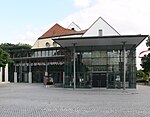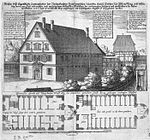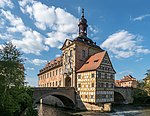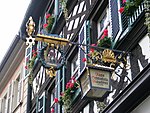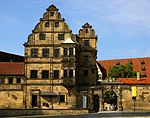Villa Dessauer
1987 establishments in West GermanyArt galleries established in 1987Art museums and galleries in GermanyBavaria building and structure stubsBuildings and structures completed in 1884 ... and 2 more
Buildings and structures in BambergMuseums in Bavaria

The Villa Dessauer is a mansion in Bamberg, Germany, which is used as an art gallery by the local City Council. The edifice was built in 1884 by the Jewish merchant Carl Dessauer. During the Nazi regime, the villa was confiscated, but after World War II the son of the former owner received his property back and sold it to the City of Bamberg. Since 1987 it hosts a gallery, which is used for several exhibitions, where both local and international artists have the possibility to expose their works.
Excerpt from the Wikipedia article Villa Dessauer (License: CC BY-SA 3.0, Authors, Images).Villa Dessauer
Hainstraße,
Geographical coordinates (GPS) Address External links Nearby Places Show on map
Geographical coordinates (GPS)
| Latitude | Longitude |
|---|---|
| N 49.890833333333 ° | E 10.892777777778 ° |
Address
Villa Dessauer
Hainstraße 4a
96047 , Inselstadt
Bavaria, Germany
Open on Google Maps

